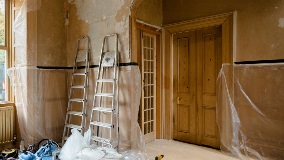
Toronto Proposes New “Renovictions Bylaw” to Protect Tenants Amid Rising Housing Insecurity
Overview
On June 26, 2024, Toronto City Council directed staff to create a new bylaw aimed at curbing “renovictions” – a practice, where unscrupulous landlords evict tenants under the pretext of conducting renovations or repairs, only to either fail to follow through with renovations or raise rents on returning tenants. Even where carried out with the intentions consistent with the spirit of legislation these actions contribute to the loss of existing affordable rental housing.
The City has legitimate concerns about both the impact on tenants, and the overall loss of affordable units. According to the Canadian Housing Evidence Collective, for every affordable unit Toronto builds, it loses two.[1] To address this growing concern, the City of Toronto has urged the Province to take action by enforcing existing laws, like the Helping Homebuyers, Protecting Tenants Act, 2023 (Bill 97), and introducing additional measures such as vacancy rent control and temporary relocation assistance for tenants.
However, the City of Toronto is moving forward with local action, drawing inspiration from Hamilton’s renovictions bylaw that is set to come into force on January 1, 2025. The proposed Renovictions Bylaw was adopted by the Planning and Housing Committee on October 30, 2024, and was adopted by City Council on November 14, 2024. The bylaw will come into effect on July 31, 2025.
Key provisions of the proposed Renovictions Bylaw include:
- Rental Renovation Licences: landlords must apply for a licence within seven days of issuing a notice to end tenancy (N13) for renovations. The cost for the Rental Renoviction License will be $700 plus HST per rental unit and will be adjusted annually for inflation. A Rental Renoviction License will be valid for a 12-month period.
- Building Permits: landlords must obtain a building permit before applying for a Rental Renoviction License.
- Report from a “Qualified Person”: landlords must obtain and submit a report from a qualified person identifying that the renovation or maintenance work is so extensive that the tenant must leave the unit. According to
the Report for Action dated October 16, 2024, for the purposes of the Renovictions Bylaw, qualified persons are generally defined as licensed engineers or architects.
- Tenant Information Notices: landlords will be required to post a Tenant Information Notice at the unit, informing tenants of their rights and the licence application.
- Accommodation/Compensation Plans: landlords must complete and submit a plan that shows how they will provide tenants who wish to return post-renovation with temporary, comparable housing at similar rents or the rent-gap payments they
will provide to tenants to cover any differences in rent at the new temporary rental.
- Moving Allowances and Severance Compensation: moving costs will be covered for all tenants, and those opting not to return will be entitled to severance compensation.
- Increased Transparency: the issued Rental Renovation Licence must be posted on the unit door to ensure transparency and tenant awareness.
Proposed fines for the Renovictions Bylaw can reach up to $100,000 for contravening any of its provisions or failing to comply with a Renovation License or order. Proposed special fines and fines for continuing offences could exceed this amount.
The stated intent of the Renovictions Bylaw is to prevent renovictions, ensure fair treatment for tenants, and maintain affordable rental housing in Toronto. However, opinions on the bylaw are divided. Critics argue that it will impose excessive bureaucracy on legitimate housing providers adding costs and time to an already slow process of redeveloping older properties that genuinely need repairs. Meanwhile proponents contend that the bylaw is crucial for safeguarding tenants from unfair evictions and ensuring housing stability.
Additionally, it is still unclear how the Renovictions Bylaw will interact with the provincial Landlord and Tenant Tribunal (“LTB”), which operates under the Residential Tenancies Act (“RTA”). The LTB requires landlords to use the N13 form when they seek to evict a tenant for the purpose of major renovations (or demolition or conversion). In this case, the landlord must provide tenants with the N13 notice and file the form with the LTB to request eviction. The LTB’s role is to assess whether the eviction is legitimate, review the details provided by the landlord (such as the scope of renovations), and ensure that tenants’ rights are respected, including their right to compensation, relocation assistance, or the right to return to their unit after renovations are completed. This potential interaction between the Renovictions Bylaw and the existing LTB scheme raises many questions, such as:
- Will the enactment of the Renovictions Bylaw cause a duplication of processes? Under the RTA, landlords must prove their eviction for renovation is legitimate and follow the LTB’s procedural steps, but will now also separately have to meet the conditions and procedural steps required for the Rental Renovation License at the municipal level.
- What happens where the City of Toronto grants the renovation license, but the LTB ultimately rejects the eviction request, or vice versa? At this point, developers and asset managers should assume that they will have to meet both a provincial and municipal test.
- Will tenants have the right to challenge eviction orders based on both the RTA (through the LTB) and the Renovictions Bylaw simultaneously?
- Will the additional steps associated with the Renovictions Bylaw discourage landlords from making necessary renovations or repairs to Toronto’s aging rental stock, negatively affecting the rental supply?
- Would a developer seeking to redevelop, need to comply with both the Renovictions By-Law and the Rental Replacement Rules.
Some of these questions may be answered as the bill moves through Council. However, others may have to wait until developers move through a redevelopment and roadblocks are encountered.

/john-fox.tmb-0.jpg?sfvrsn=4c040103_2)
